These sea-faring saucepans — English-made and nickel-lined — belong to reader Roger W.
Roger W.’s introduction to these pans is irresistible:
The nationality of a copper pan is usually obvious and these could not be anything but English — stiff, formal and businesslike. Elkington supplied commercial users possibly exclusively, and their copper often bears stamps of shipping lines — could it be that nickel fares better than tin in salt air? I have seen Anchor, Red Star and White Star Lines marked on examples. Titanic was certainly equipped with some Elkington pans. My saucepans proudly display the mark of P&O (Peninsular and Oriental) alongside the makers mark and number (model ID).
Elkington and P&O are new names for me — let’s dig into their history and then look at the pans.
Elkington & Company
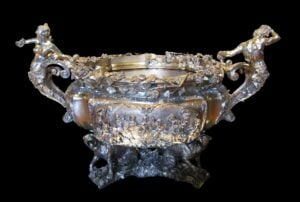 This Birmingham-based metalsmith patented several metal alloys and plating techniques in the 19th century and produced beautiful plated pieces ranging from ornamental silver to everyday flatware. During the 19th century, Elkington specialized in high-quality electrotypes, a technique of reproducing a metal object exactly using molds. The photo at right is of Elkington’s electrotype of the Jerningham Wine Cooler made in 1734 from solid silver that sits in the Hermitage Museum in St Petersburg. Elkington’s 1884 reproduction is silver-plated copper and resides in the Victoria & Albert Museum in London. The National Portrait Gallery has a thorough writeup of Elkington’s early history from 1837 until the death of founder George Richards Elkington in 1865, to include notations of the firm’s significant work. After George’s death, his sons Frederick, James, Alfred John, Howard, and Hyla continued the business for another twenty years until 1887 when it was converted into the limited liability company “Elkington & Co Ltd.”
This Birmingham-based metalsmith patented several metal alloys and plating techniques in the 19th century and produced beautiful plated pieces ranging from ornamental silver to everyday flatware. During the 19th century, Elkington specialized in high-quality electrotypes, a technique of reproducing a metal object exactly using molds. The photo at right is of Elkington’s electrotype of the Jerningham Wine Cooler made in 1734 from solid silver that sits in the Hermitage Museum in St Petersburg. Elkington’s 1884 reproduction is silver-plated copper and resides in the Victoria & Albert Museum in London. The National Portrait Gallery has a thorough writeup of Elkington’s early history from 1837 until the death of founder George Richards Elkington in 1865, to include notations of the firm’s significant work. After George’s death, his sons Frederick, James, Alfred John, Howard, and Hyla continued the business for another twenty years until 1887 when it was converted into the limited liability company “Elkington & Co Ltd.”
Into the 20th century, the firm diversified into items ranging from sterling silver teapots, flatware, and serving platters to candlesticks and centerpieces to medallions, busts, and statuary. To get an idea of the range and beauty of Elkington’s work, take a look at Carter’s Price Guide to Antiques listings for Elkington items — they are beautiful. The company survived both World Wars but in 1944 left Birmingham to become a subsidiary of British Silverware Ltd. The end date of Elkington is a bit fuzzy — in many ways it continues to this day as part of British Silverware — but it ceased to exist as a separate entity in 1963.
Peninsular & Oriental Company (P&O)
Britain built her empire in the 19th and 20th centuries and it was P&O steamships that carried her sailors, merchantmen, and tourists to the farthest corners of the globe.
(You can find P&O’s official timeline here, but I heartily encourage you to spend some time exploring The Old Peninsular & Oriental Steam Navigation Company site by Nick Messinger that really brings its history to life.)
The company — still in operation today — was founded in 1837 as the Peninsular Steam Navigation Company with a charter from the English government to carry mail by steamship to Spain and Portugal (the Iberian Peninsula of its name). In 1840, the company won a second contract to carry mail to Egypt and began to push further east around the Cape of Good Hope to Singapore and India, adding “Oriental” to the company’s name. They reached Australia in 1852 and China in 1859.
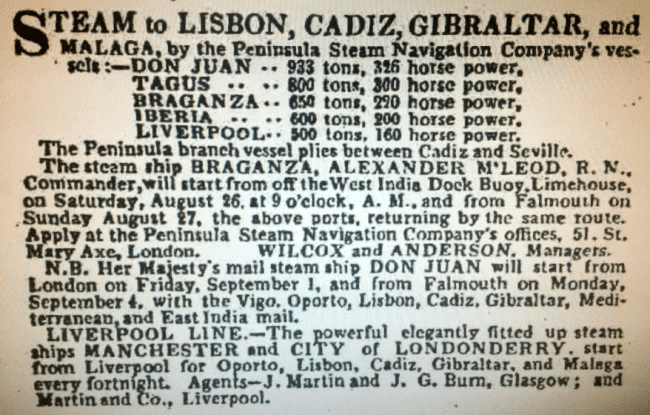
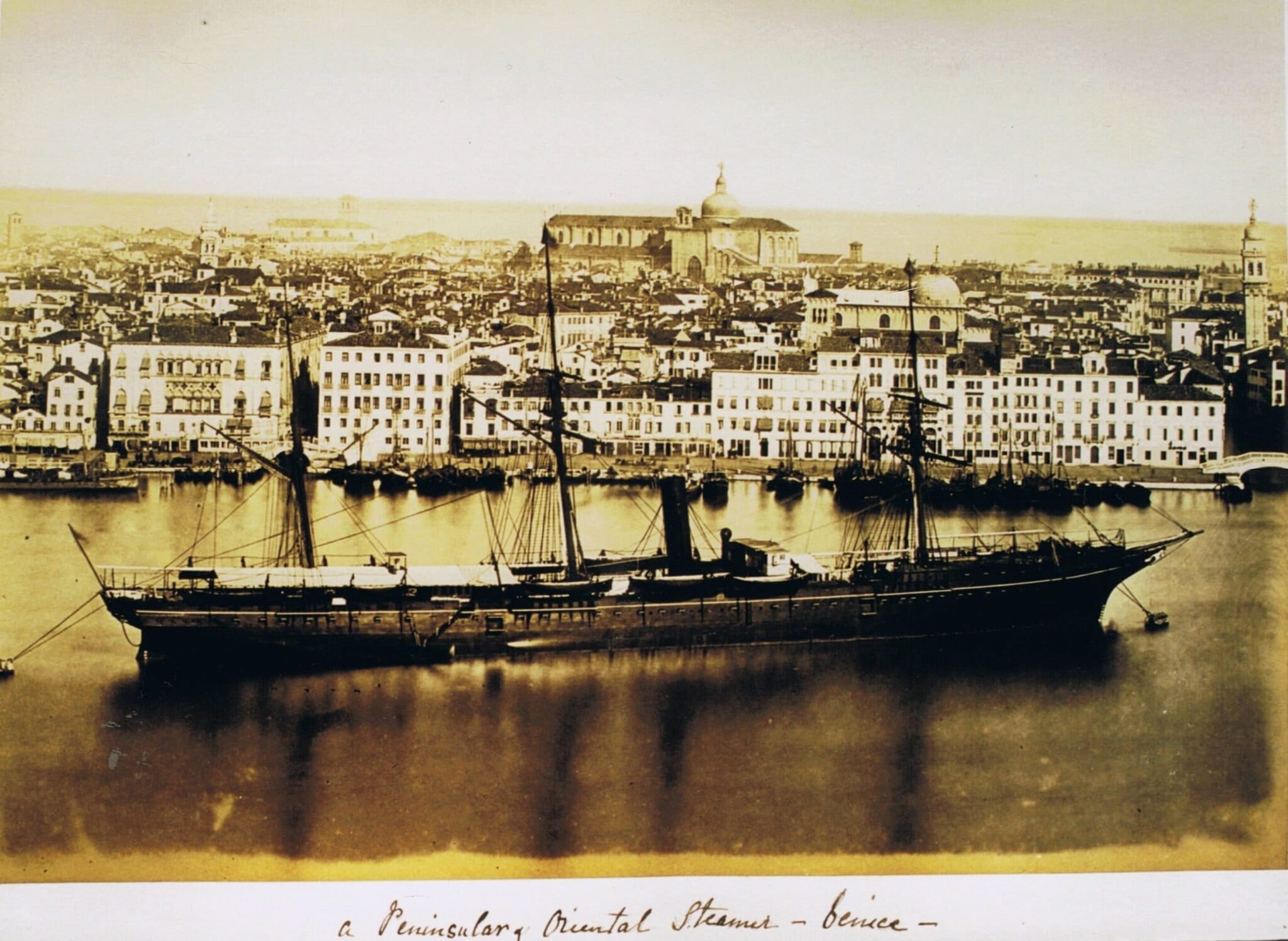
By the 1890s, the company had weathered wars, the competitive threat of overland railways, and the industry disruption of the Suez Canal to build a fleet of the largest and fastest steamships in the world. In 1904, the company inaugurated a new class of service: “pleasure cruises” to carry passengers along with mail and cargo to Egypt, India, and the Far East. P&O’s ships were requisitioned for the war effort in 1914, fitted with anti-aircraft guns and the “razzle-dazzle” camouflage paint scheme intended as a countermeasure to German U-boats.
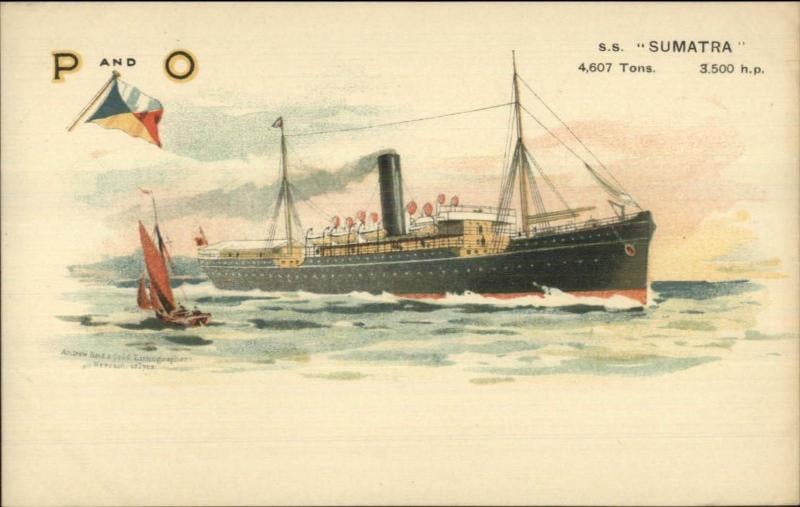
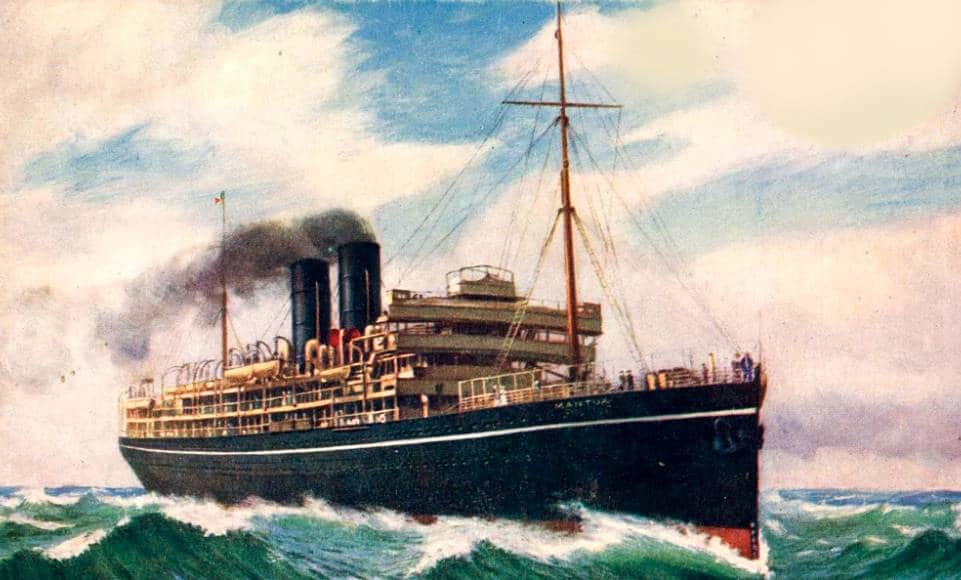
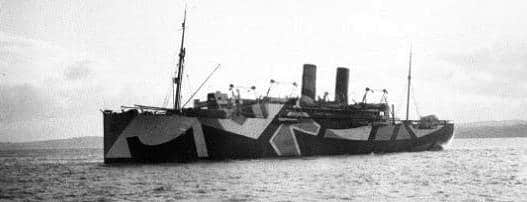
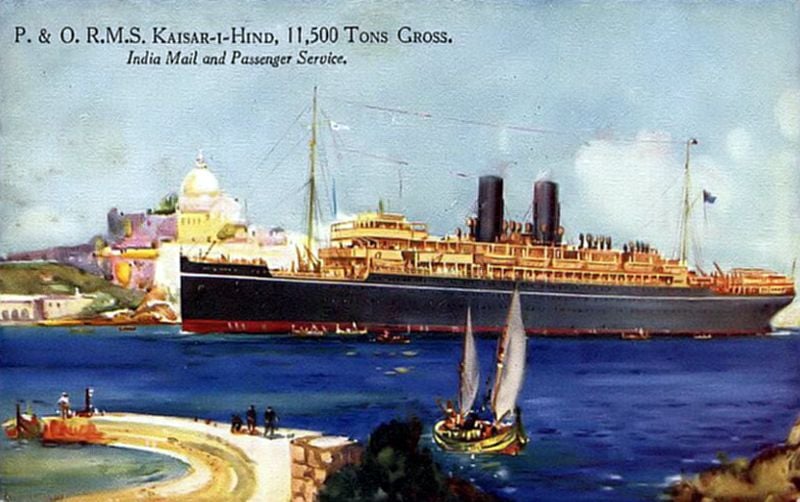
P&O survived WWI and thanks to a series of canny investments and acquisitions became the largest shipping company in the world by 1924. The SS Mooltan, commissioned in 1918 and inaugurated in 1923, epitomized the new era of P&O service in the 1930s: at 21,000 tons, with seven decks and room for 656 passengers, it was nicknamed “the ship of a thousand romances” and considered the finest ocean liner of its time.
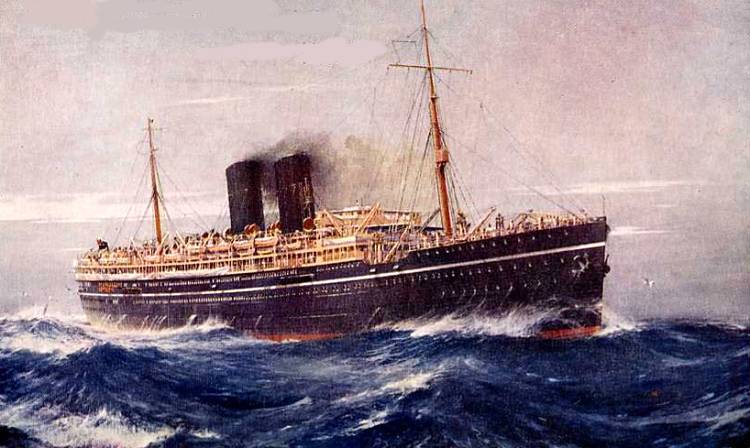
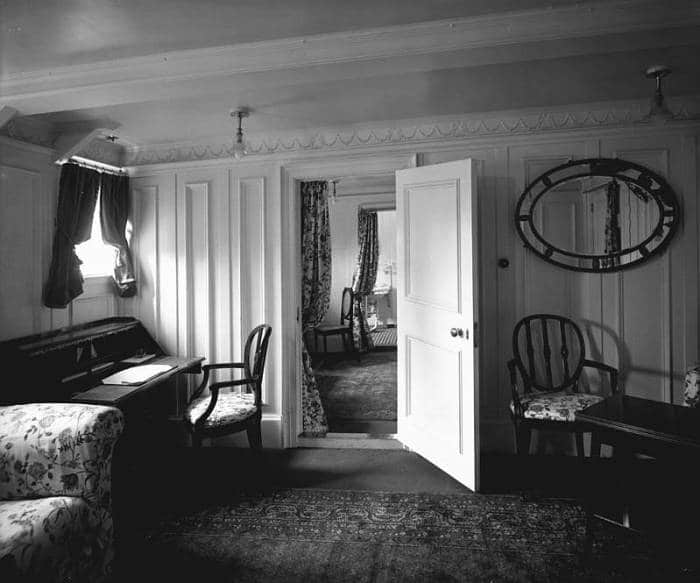
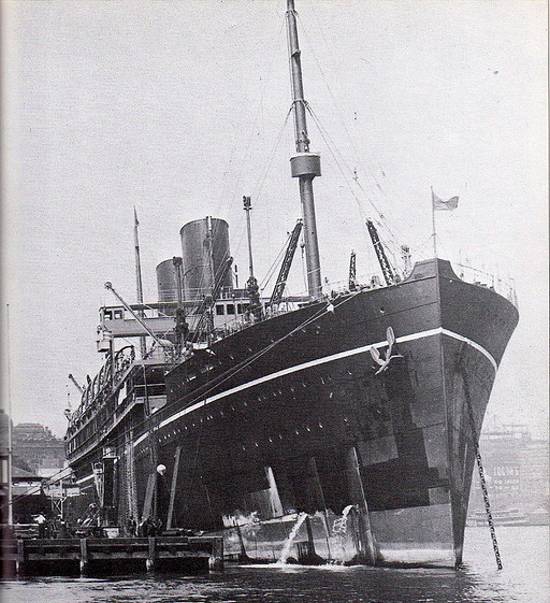
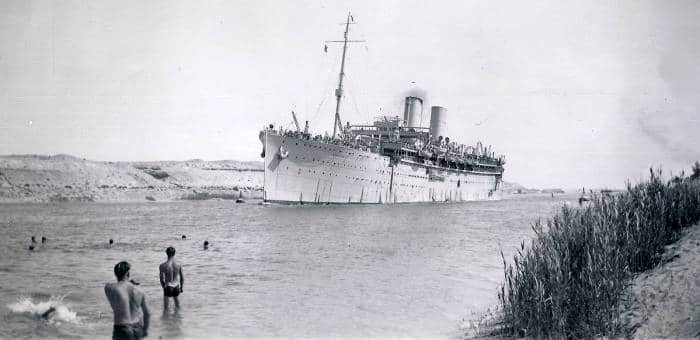
P&O’s ships were requisitioned for World War II and the company lost half its fleet by 1945. After the war, P&O rebuilt once again, concentrating on fewer, larger ships and diversifying into new markets such as oil tankers, bulk shipping, and dry cargo. From 1945 to 1972 the company participated in the “Ten Pound Poms” program to offer passage to immigrants from the UK to Australia for just £10 — less than a tenth of the fare — subsidized by the Australian government. The 1980s to the 2000s brought more corporate acquisitions, diversifications, restructurings, and divestments, but the company continues to this day as P&O Ferries, P&O Ferrymasters, P&O Maritime, P&O Estates, and P&O Cruises.

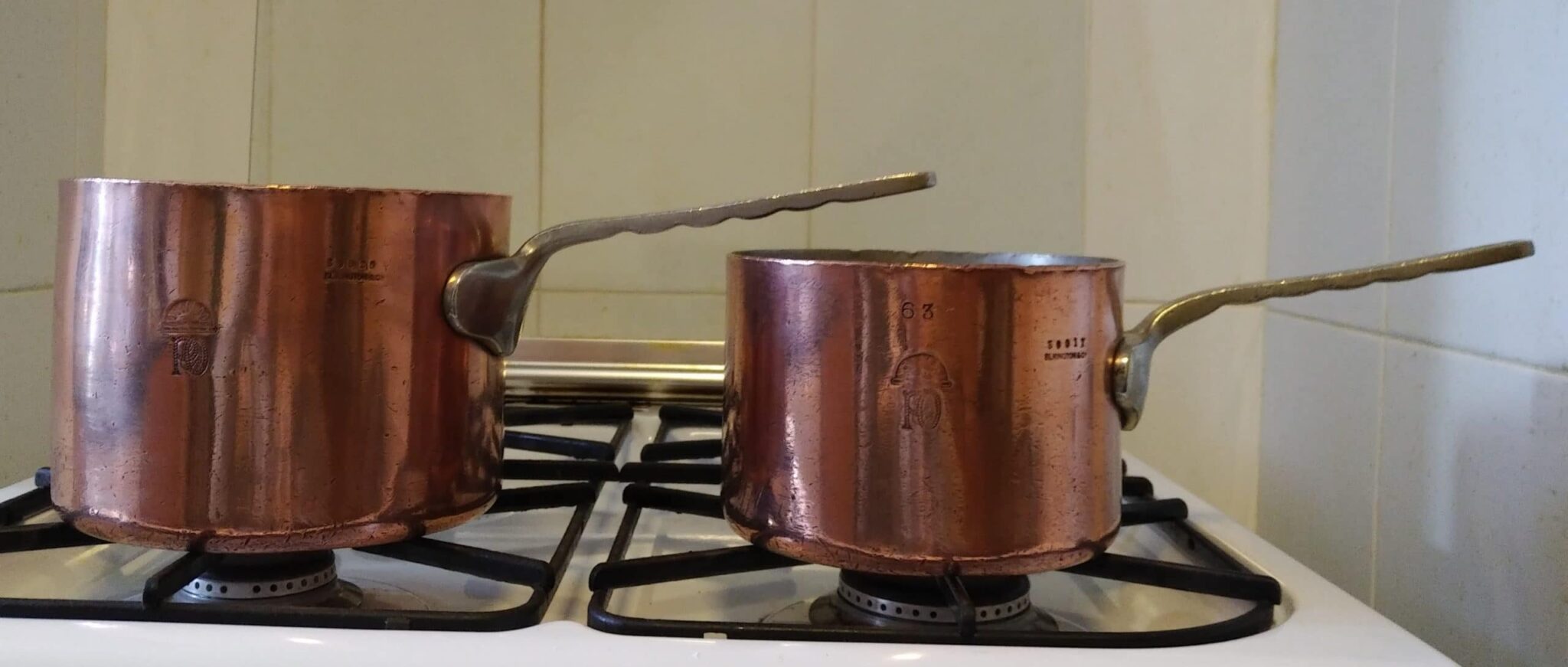
| Type | Nickel-lined saucepans with handles of nickel or nickel alloy fastened with rivets of the same material | |
| Dimensions | 18cm diameter by 13cm tall (7 by 5.1 inches) |
15cm diameter by 11cm tall (5.9 by 4.3 inches) |
| Weight | 2240g (4.9 lbs) |
1700g (3.8 lbs) |
| Thickness | 3mm | 3mm |
| Stampings | P&O with sunburst crest; “39026 Elkington & Co.” |
P&O with sunburst crest; “39017 Elkington & Co.”; “63” |
| Maker and age estimate | Elkington; 1900-1930s | |
| Owner | Roger W. | |
If it seems incongruous that a company that specialized in decorative silver-plate would produce a line of utilitarian copper cookware, consider the eminently practical rationale provided in Elkington’s 1932 catalog:
Introduced to supply durable, hygienic and efficient utensils for every culinary purpose. The linings are of pure nickel, impervious to food acids, and practically everlasting in wear. Copper, of which the outsides are made, is admittedly the best conductor of heat, and all danger of burning the contents is avoided. These utensils embody all the advantages of both materials. The product is patented with the name of Elkington. It has met with great success, and is now largely used in the kitchens of the leading Steamships, Hotels, Restaurants, and Dining Cars. Owing to the increased demands, prices are now substantially reduced. The original capital outlay pays for itself in a short time, as NO RE-TINNING or RE-PLATING is required, and all dangers of food contamination are abolished. The articles are seamless and are made of greater thickness at the bottom by a special process.
My goodness, it makes one want to run out and buy a set immediately. Let’s decode some of these benefits.
“Durable, hygienic, and efficient.” Nickel was seen as a miracle material in the early 20th century — bright as silver without the tarnish, harder than tin and aluminum, and safely non-reactive in contact with food. Several French and German cookware makers produced solid nickel cookware from the 1890s into the 1930s (and I have a few pieces), until the wartime demand for nickel for stainless steel outweighed the consumer market for cookware.
“All the advantages of both materials.” Nickel-lined copper cookware really does make a lot of sense. As Elkington asserts above, “Copper… is admittedly the best conductor of heat,” far better than nickel alone. But copper is a soft metal that will react to certain food acids, whereas nickel — “practically everlasting in wear” with “all dangers of food contamination… abolished” — provided an excellent and resilient barrier.
“NO RE-TINNING or RE-PLATING is required.” This was the kicker: the primary advantage of nickel was an economic one. Tin-lined copper in the 19th and early 20th century got fairly rough treatment — “dish soap” with effective detergents and surfactants was not invented until the 1940s, and prior to that, cleaning copper pots came down to hard scouring with sand and harsh chemicals like lye. Tin linings did not last long in a busy commercial kitchen and retinning could be a monthly ritual. No wonder nickel seemed like the answer — it could take harsh scrubbing without wearing away (though I’d still recommend a gentler approach with any nickeled cookware you have!). Elkington’s assertion that “the original capital outlay pays for itself in a short time” was likely quite correct for most kitchens and this economic argument was central to nickel’s appeal.
In that context it makes quite a lot of sense for P&O to select nickeled cookware for its ships. Even in the company’s fastest steamships, a voyage to Australia took weeks, and the kitchen couldn’t afford to have copper pans fall out of service in the middle of a long voyage. Nickel was the obvious solution, and as Elkington had been working with copper since the 1830s and was the worldwide expert in plating techniques, it was a common-sense product for them to develop.
And so we have these two beautiful saucepans. Says Roger, “I have polished these old sailors for the photographs as they would want to look their best. They bear many honourable scars and are now cosseted like never before though not yet retired!”
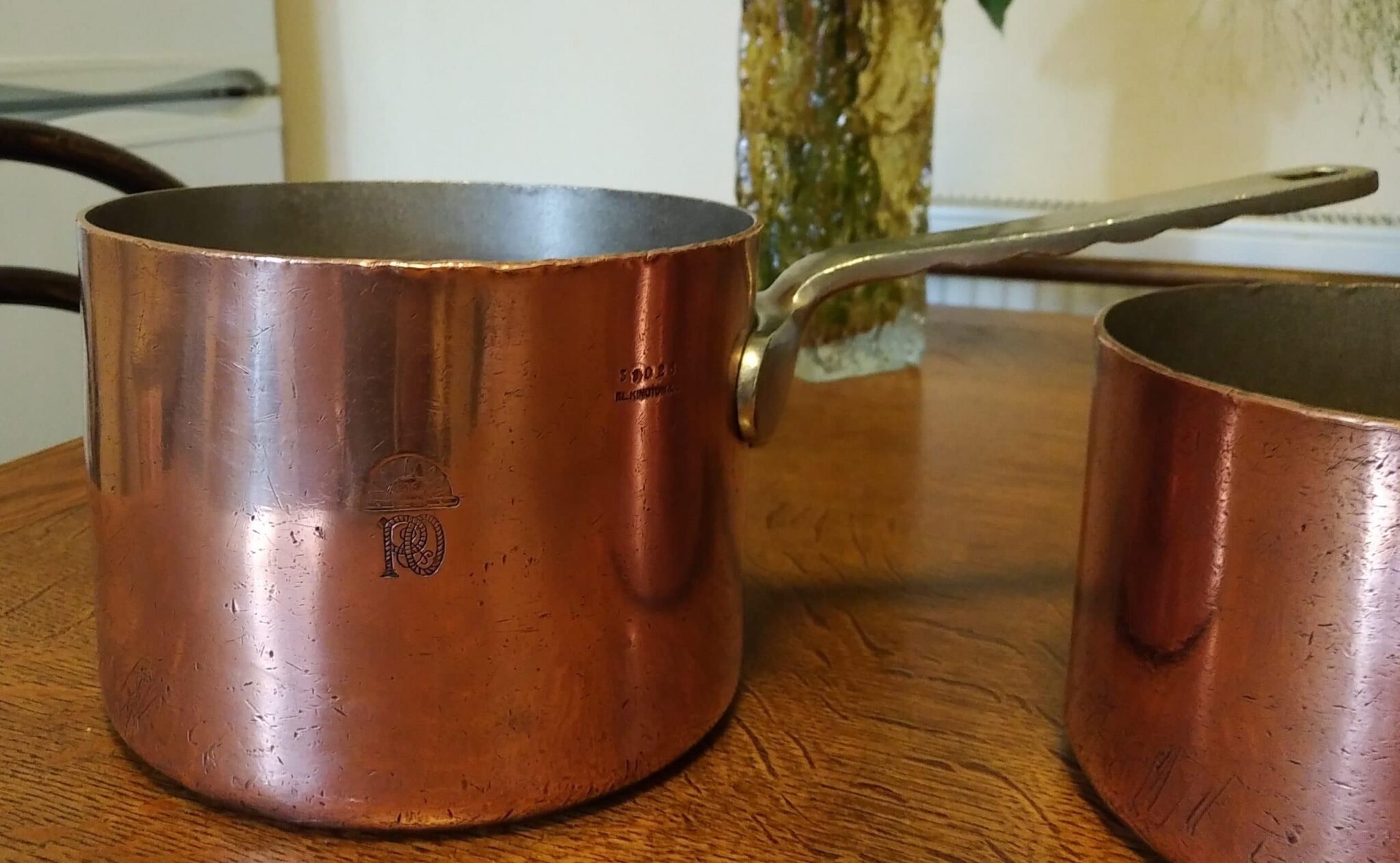
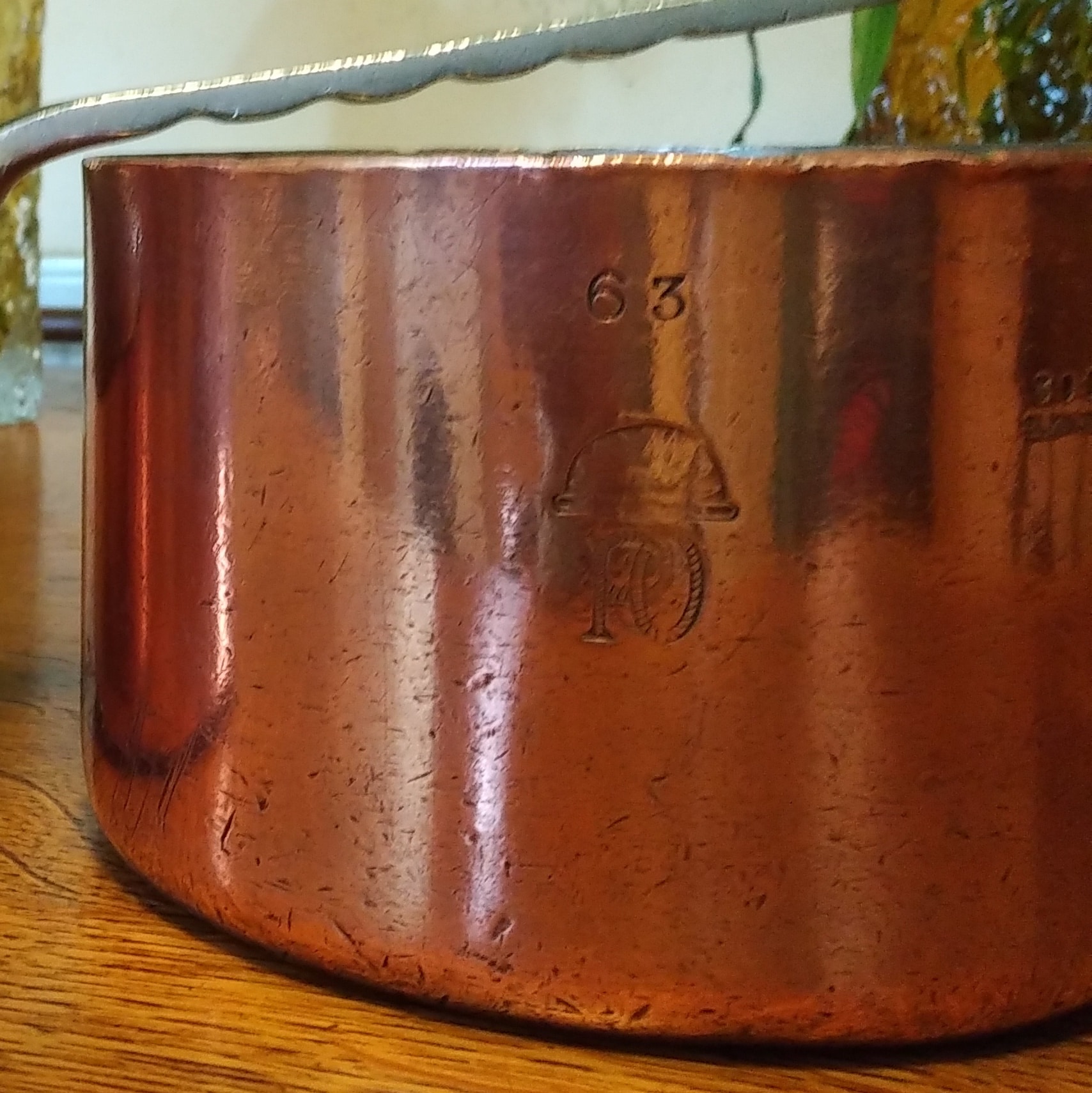
They’re stamped with the intertwined letters P and O styled out of rope and crowned with a sunburst crest. I don’t know if this was the logo of the company or a design created by Elkington but I see this same logo on flatware pieces (also likely Elkington make). Each pan is also stamped with a five-digit code corresponding to its item number in the Elkington catalog. The 18cm pan is item number 39026, while the 15cm pan is item 39017.
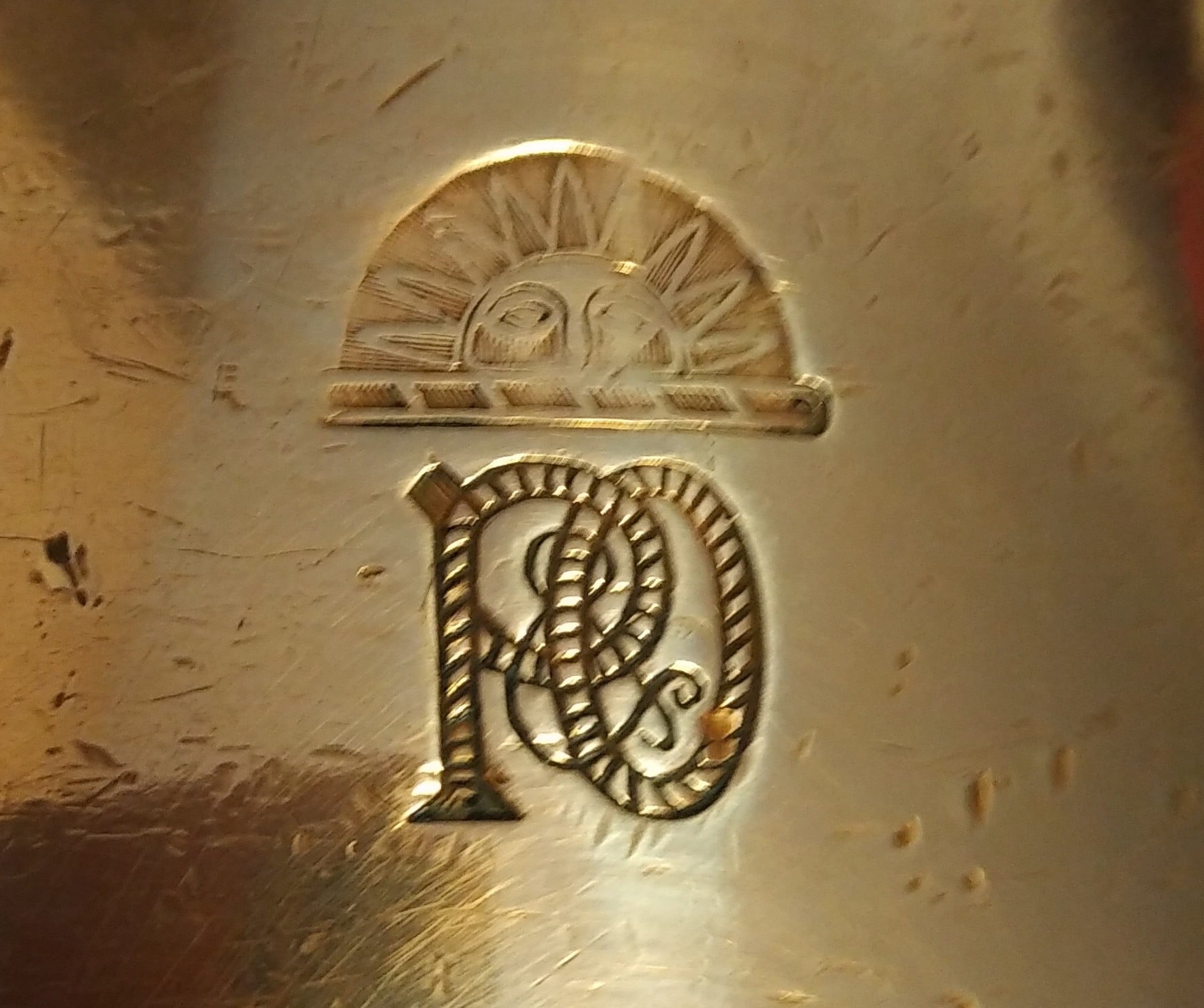
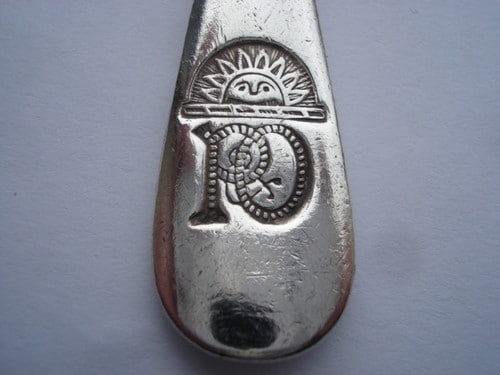
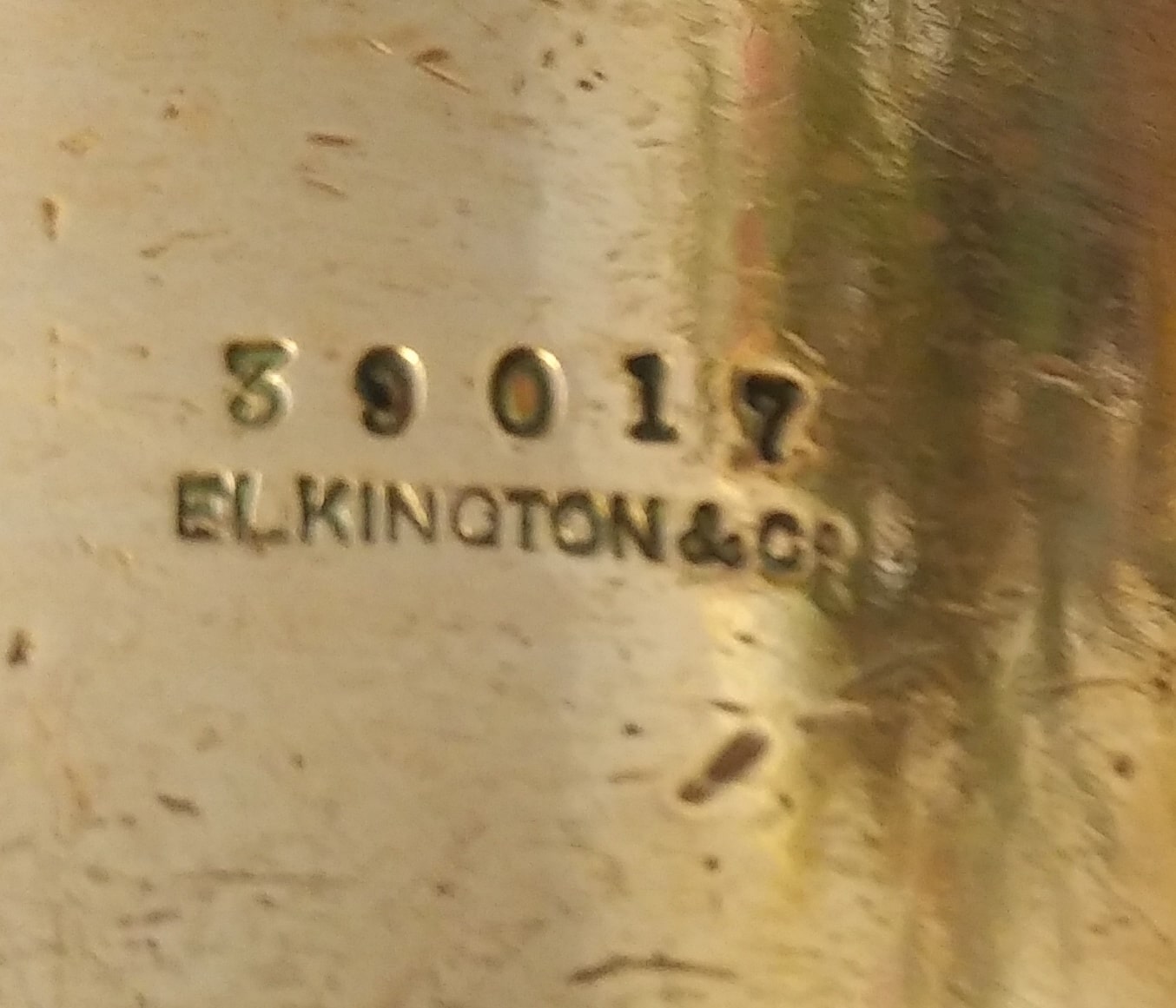
Roger estimates that the copper is about 3 millimeters thick, but based on their hefty weight, I think they’re thicker than that in the base (just as Elkington promised). The nickel inside is in fine condition. Judging by the rim of the pan, the nickel lining is about .1 to .2mm thick, about the same thickness as a tin lining.
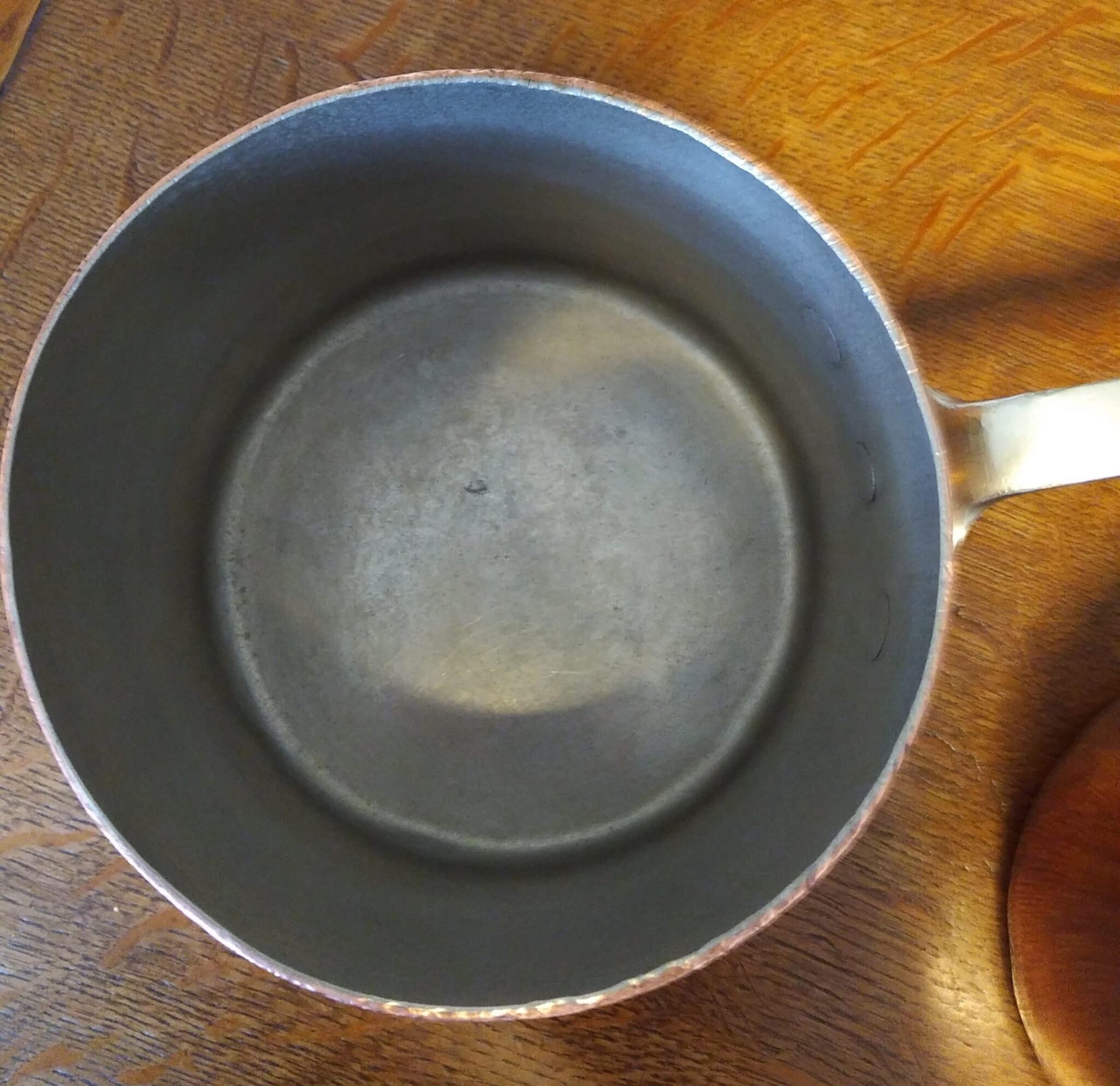
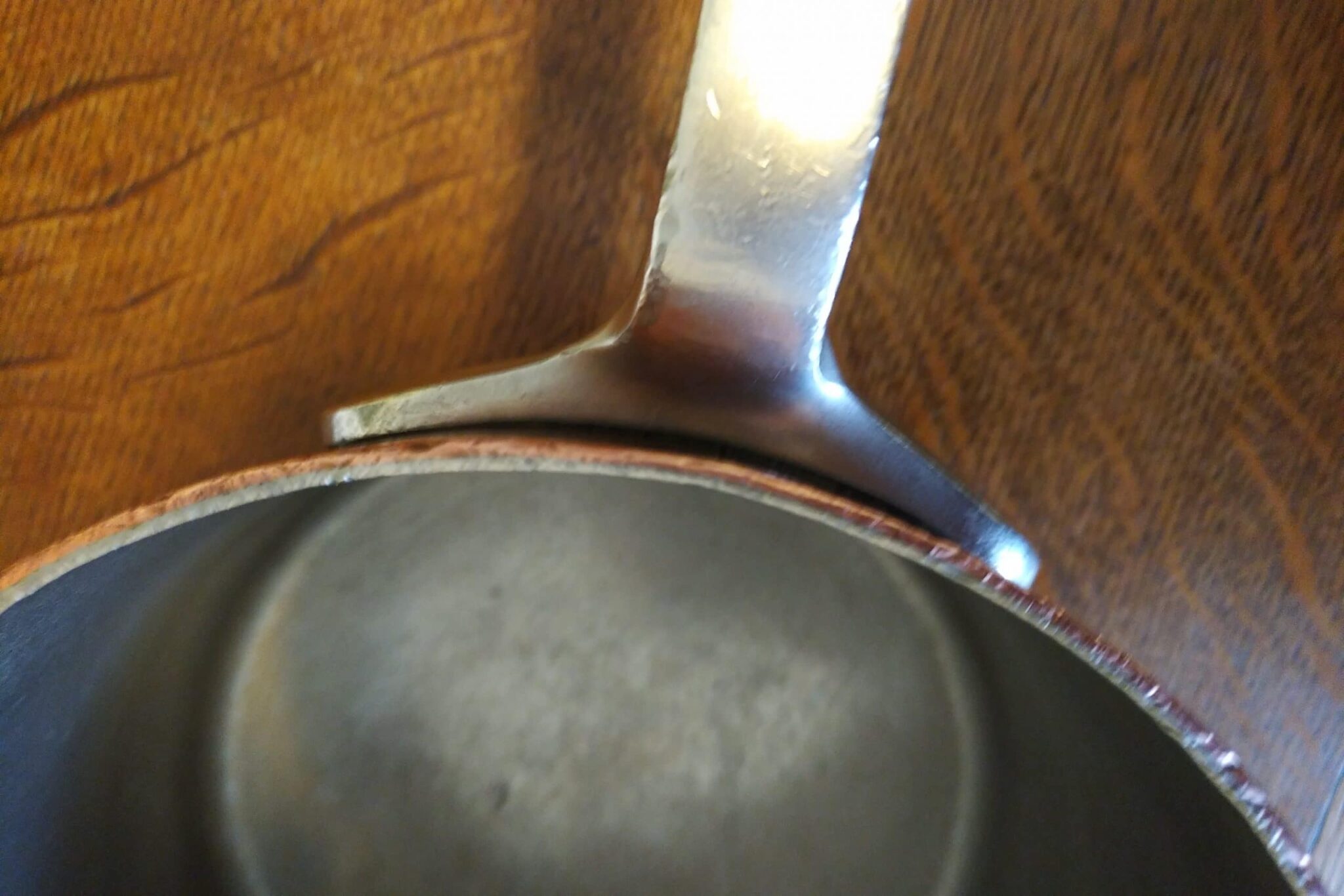
The handles are the most distinctive element of the pans. The handle design has ridges on the undersurface that would come in handy to help grip the pans securely (particularly during rough seas).

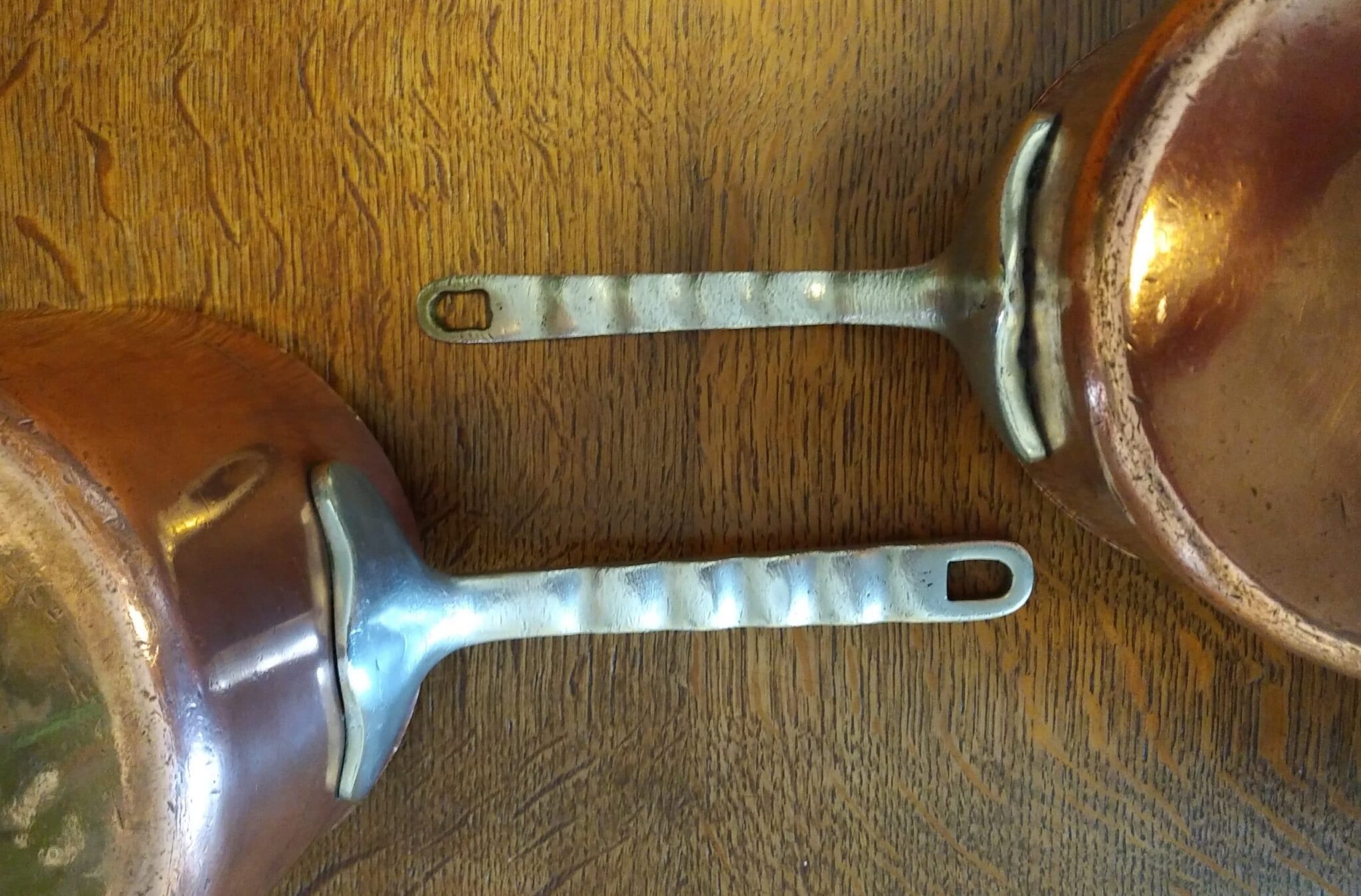
The rivets are set flush to the interior surface as well as the contour of the baseplate. From the outside, they look almost invisible on the surface of the baseplate.
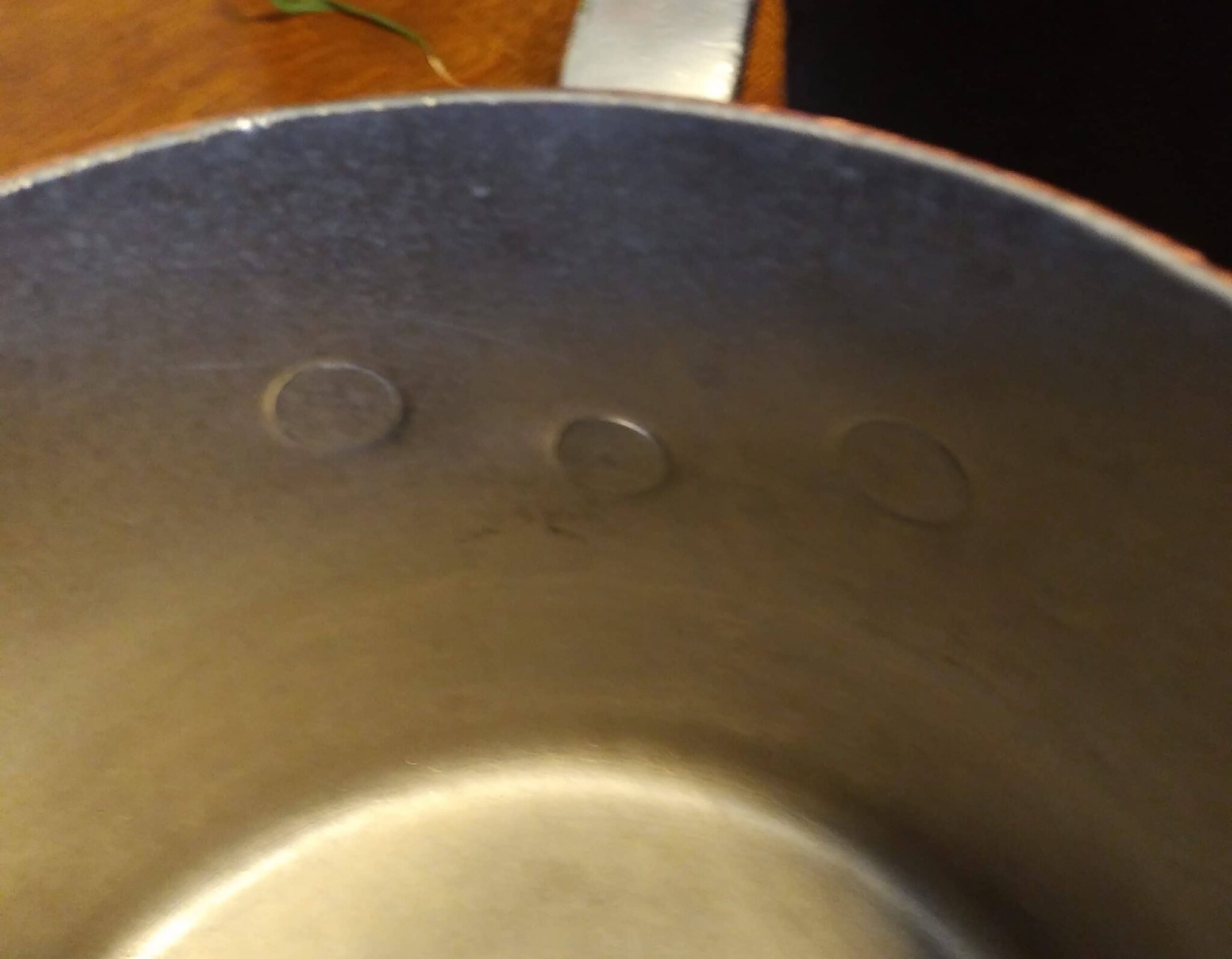
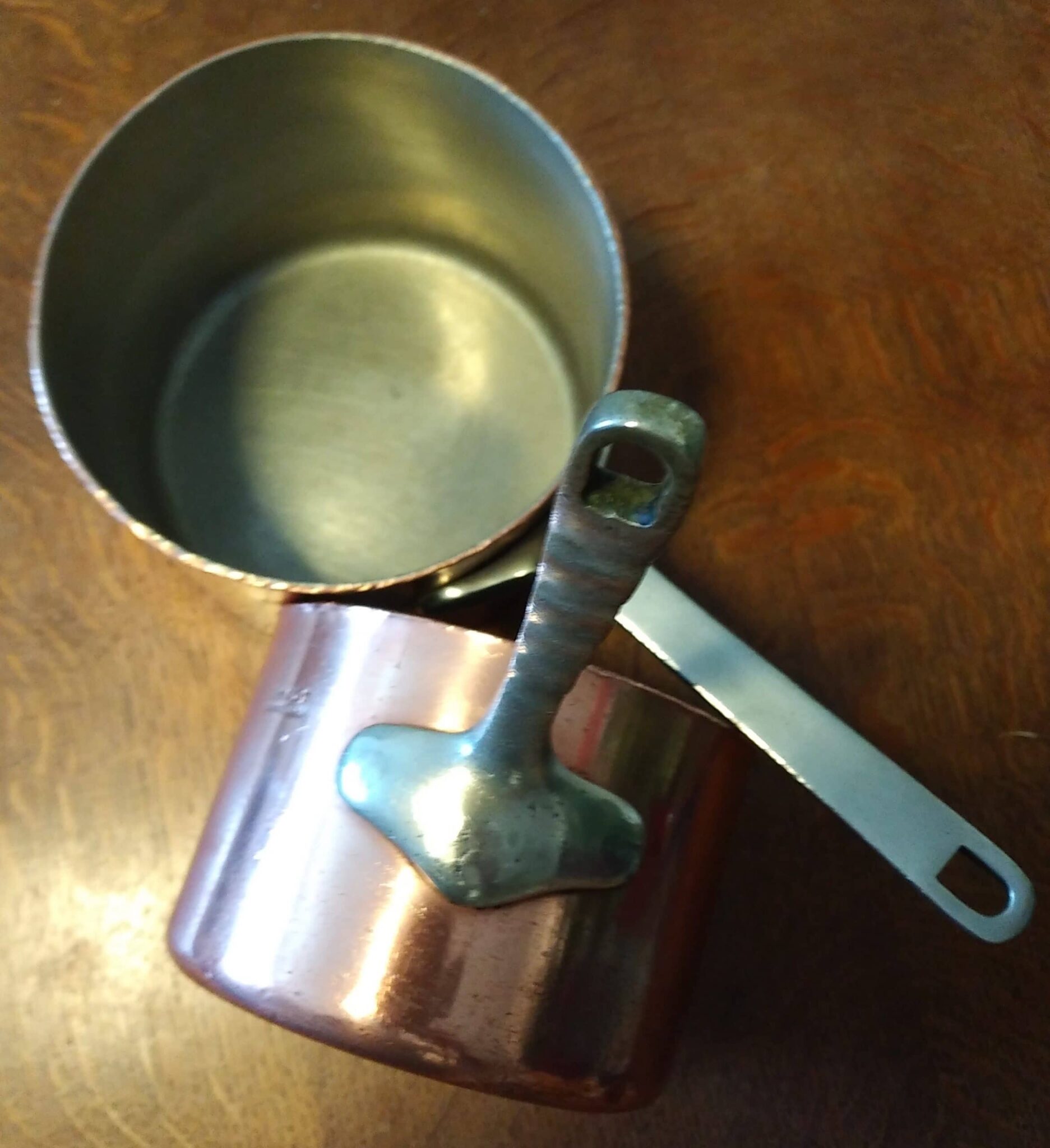
What is the metal of the handle and rivets? Roger speculates that they could be pure nickel, adding that they seem to be quite heat-resistant — an excellent quality for the handles of stovetop pans. But I suspect they may be a nickel alloy. Elkington patented a process in 1840 to manufacture nickel silver, also known as alpacca, made of 60% copper, 20% nickel, and 20% zinc that was frequently used as an imitation of sterling silver for flatware. Nickel silver also has high electrical resistance and would protect the handle from heat transfer. (Another possibility is Britannia metal, made of 92% tin, 6% antimony, and 2% copper, though that alloy looks more cool-toned to me, more like pewter.)
These are marvelous pieces of history and I am so grateful to Roger for sharing them with us. As he does, I suspect they’re happiest at work on the stovetop, albeit at a more relaxed pace than they experienced at sea!
Sources
I took some details of Elkington’s early history from the National Archives, https://discovery.nationalarchives.gov.uk/details/r/6b98f156-1684-4cf9-b6a3-9a6accc4f1c9
P&O’s official history is at http://www.poheritage.com.
Nick Messington’s wonderful site about P&O is at http://www.pandosnco.co.uk.


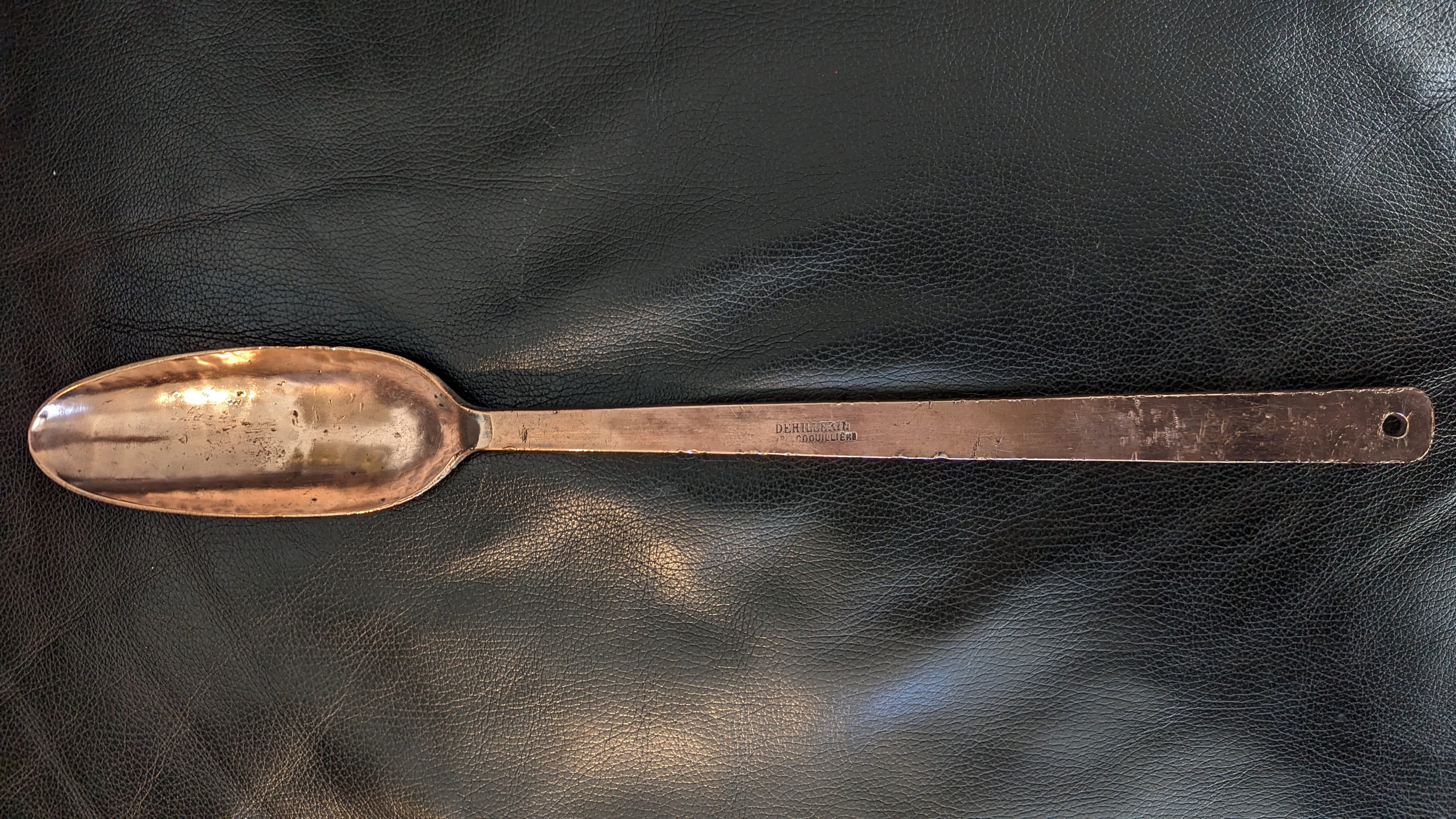

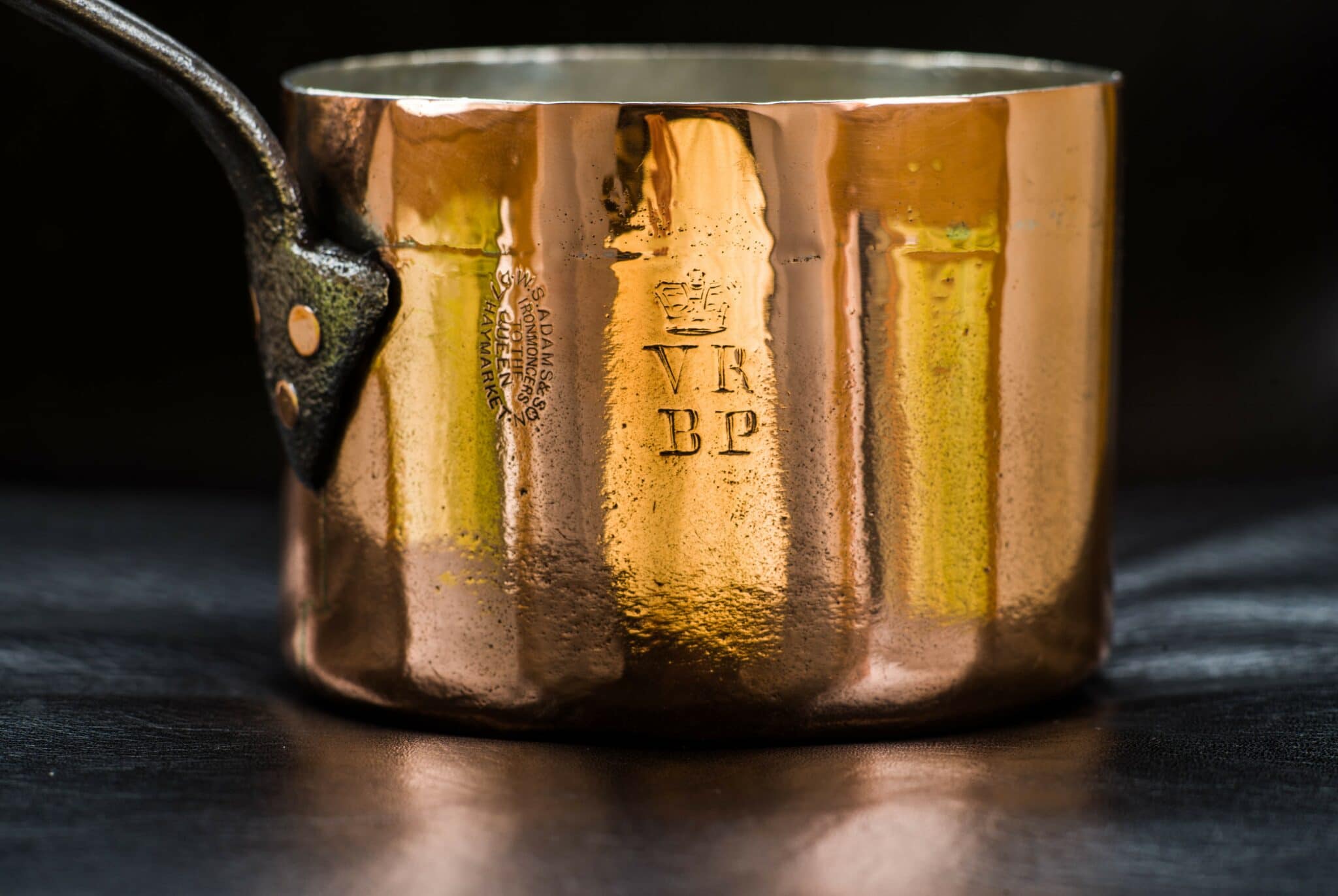

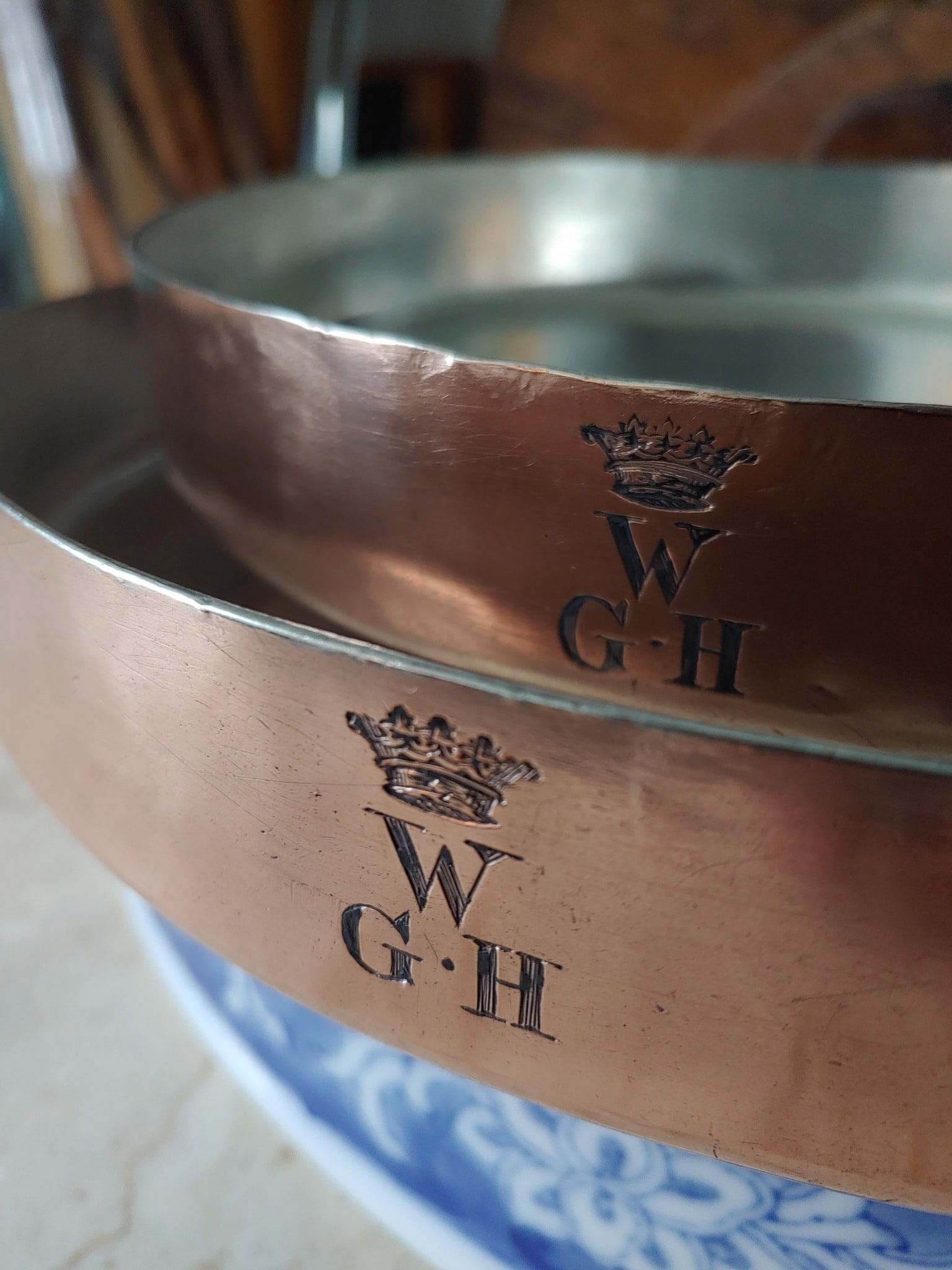
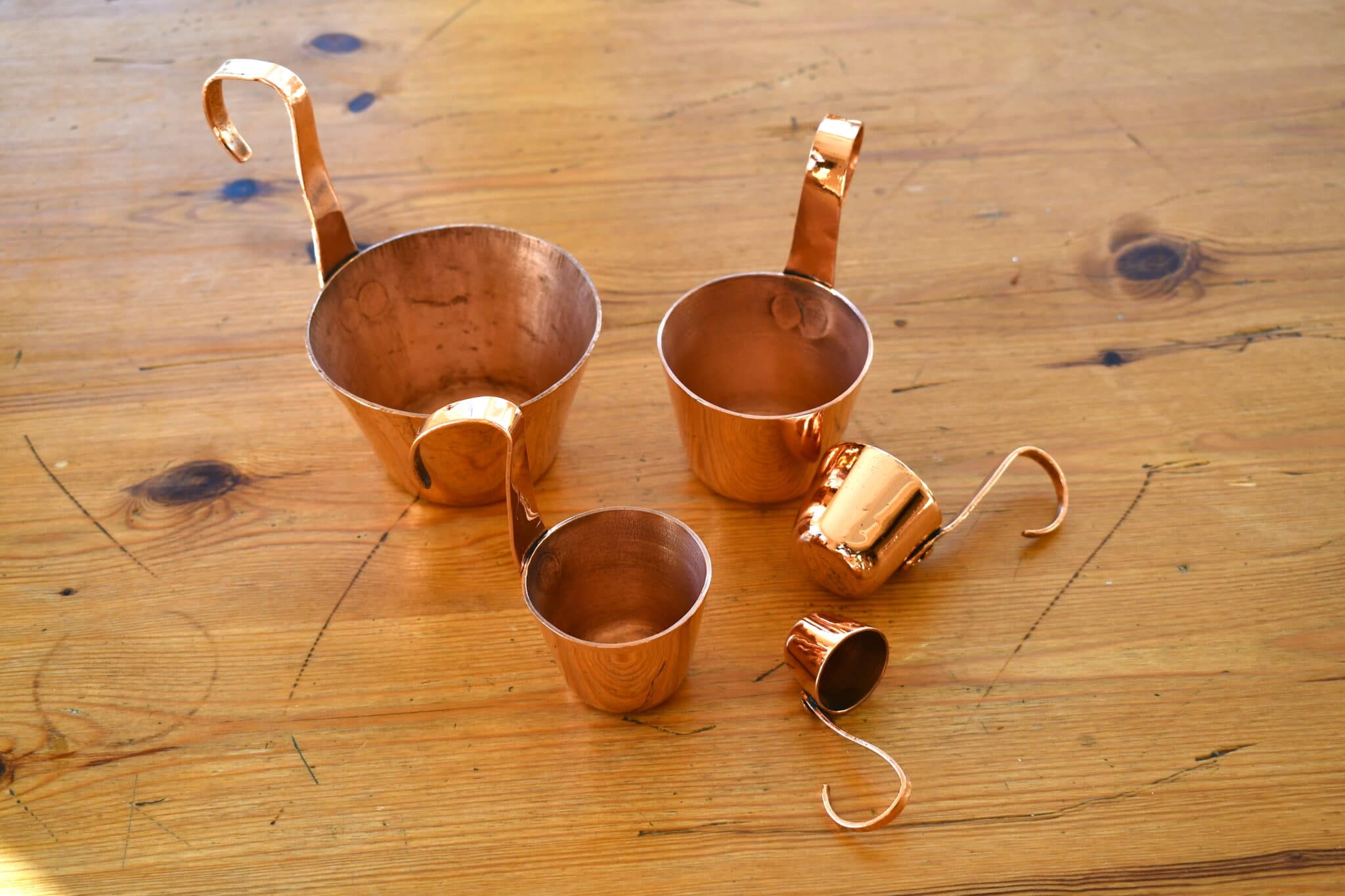
I have an Elkington stockpot and two small Elkington windsor pans. The quality of the workmanship on the pans is excellent, and the copper is *at least* 3 millimetres thick all the way around the rim of each pan. They are among the best copper pots around – if one can find them.
ST, how marvelous that you have them! These two saucepans are a little taller than standard French saucepans of the same diameter but quite a bit heavier — there is certainly extra copper in there. How lucky you are to have your Elkington pieces — truly work of great craftsmanship. Enjoy them — and use them!
Hello from Germany, this report about the Elkington company is timely. A few weeks ago I came across a saute pan from this manufacturer. I had never read anything about Elkington or seen goods before. So I started an internet search and found the history of the company and some photos of magnificent pans and much more of fine cutlery and dishes. Since you have already summarized everything perfectly as always, I do not need to add anything.
Somewhat later I have been able to purchase a small saucepan (16x11cm, 2kg) on ebay. Although the outside of the saucepan shows some traces of decades of use (small scratches, bumps, a minimally uneven floor and hardly visible warping at the top), I was completely surprised by the almost new condition of the inner lining with nickel. The thickness of the coating is astonishing at 0.5mm, as one can clearly see at the rim. Although the design of the Elkington copper pans and pots differs from the usual design of French pots, it still has its charm. Yes, maybe a little “stiff” and very “correct”.
I could send photos of the pan, but I don´t know how to do.
Martin
Martin, I’d love to add photos of your pots. I’ll email you so you can send them to me directly. Thanks!